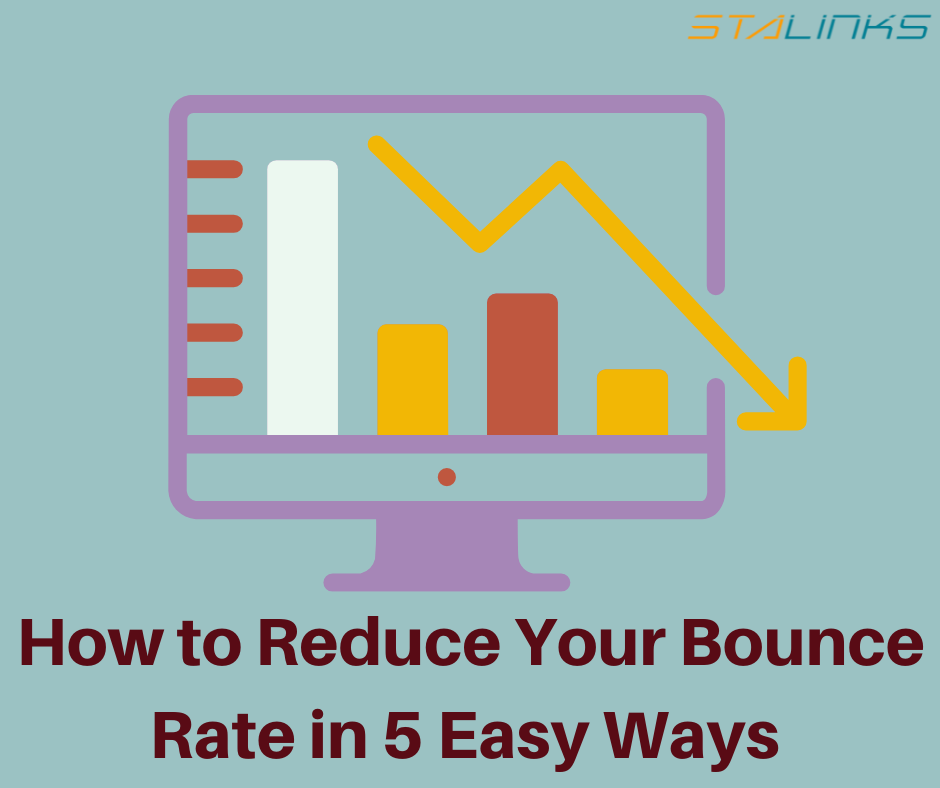Posted on March 17, 2022
What is Bounce Rate?
Bounce rate refers to the percentage of visitors who leave a webpage without taking any action, such as clicking on a link, completing a form, or making a purchase.
Why Bounce Rate Matters?
Bounce rate refers to the percentage of visitors who leave a webpage without taking any action, such as clicking on a link, completing a form, or making a purchase.
Why Bounce Rate Matters?
- If someone bounces from your site (clearly), they did not convert. Therefore, you can also increase your conversion rate if you keep visitors from bouncing.
- Bounce rate may be used as a ranking factor by Google. A recent industry study found a strong correlation between Bounce Rate and first page Google rankings.
- When you have a high Bounce Rate, your site (or specific pages on your site) has content, user experience, layout, or copywriting issues.
5 Ways to Reduce Bounce Rate
1. Keep an eye on page loading times
An incredibly poor user experience is created when users are forced to wait a long time (more than three seconds) for a page to load.If a visitor cannot even see the content on the page, it does not matter what the content is.It is even more crucial to ensure page load times are fast on mobile devices since users are more likely to become frustrated with slow load times and bounce.
2. Make it easy to search the site
Site search functionality may be neglected or difficult to find on some websites.If the user is looking for something specific that they cannot see on a page, this is an extremely useful tool that can be used instead of leaving a page or site altogether.
3. Ensure easy navigation
Visitors should be able to navigate easily and effortlessly. It is important for users to know where to find the content they are looking for when they get to a site. It is likely that they will bounce off the site if it is not simplistic and clearly laid out in intuitive navigation.
4. Add Simple, Call to Action
You should consider what specific action you want visitors to do when they are on your website. After you know what your visitor wanted to do when they consumed the content that you are offering.
When you know what you want your visitors to do, you can direct them to take action by incorporating ONE crystal-clear call to action.
You are more likely to confuse and overwhelm your visitors when you include too many CTAs on one page. Even though it’d be great if we could include several calls-to-action on a single page and trust visitors to thoroughly inspect and evaluate each before taking action, let’s be honest – this doesn’t happen that often. Visitor’s should be able to easily and quickly find what they want, and do what they want, on your site.
Your visitors shouldn’t be bombarded with dozens of CTAs. Consider the intention of your visitors and how your pages can help them achieve their goals, then include a relevant call to action that helps them achieve their goal.
5. Identify the reason for visitors leaving
What is your first question when someone looks around your website and then leaves? You should ask yourself what scared them away.
Was it the store’s layout that caused the problem? Did they find dissonance between the expectation they built and what they found? What were the offers like? Maybe the people you are attracting aren’t interested in your brand?
You will gain a better understanding of how to improve bounce rates with each answer you find. That is why you should know your buyer persona so you can build your strategy around it.
FAQ about Bounce Rate
Why is my bounce rate suddenly so high?
An increase in bounce rate is often caused by multiple Google Analytics tags firing on one site. Some changes to your website visitor experience that’s affecting browsing. A drop in high- quality content.
What is an acceptable bounce rate?
As a rule of thumb, a bounce rate in the range of 26 to 40 percent is excellent. 41 to 55 percent is roughly average. 56 to 70 percent is advanced than average, but may not be cause for alarm depending on the website. Anything over 70 percent is disappointing for everything outside of blogs, news, events, etc
What affects bounce rate?
As we mention in our article several things that affect bounce rate Load Speed, Call to Action, Confusing navigation, etc.
Conclusion
At this point you probably realize your site’s general skip rate. Does it appear high to you? Assuming this is the case, does it actually appear to be that way when evaluated with the wide range of various measurements?
Everything comes down to giving the best client experience conceivable. Assuming you give your crowd the very thing they need, they’ll be bound to land, peruse, and convert.

Peni is a graduate in Education Business and Management who possesses a strong passion for digital marketing, social media marketing, and business development. With a professional background in both the education technology and marketing agency industries, Peni offers valuable and practical insights within the SEO industry via Stalinks blog

